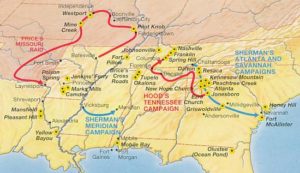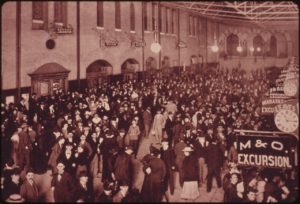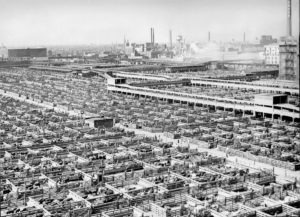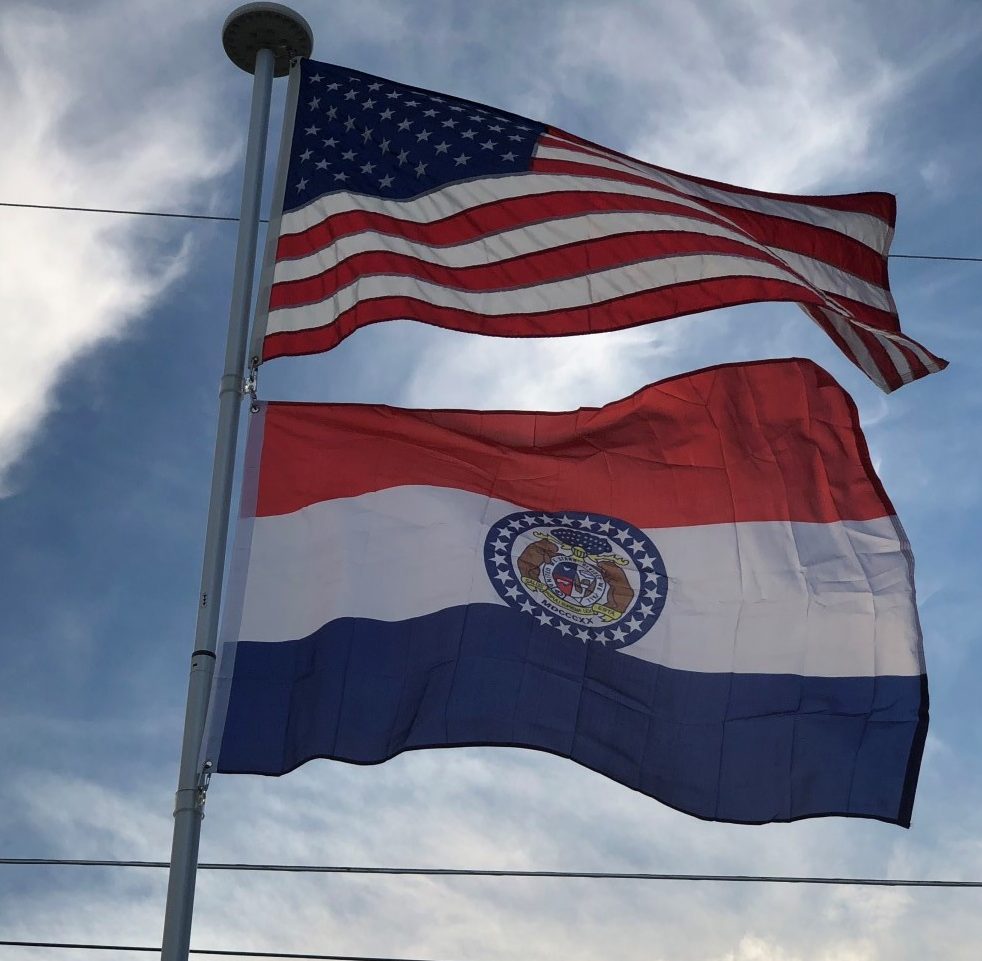Fighting ensued between Union forces and a combined army of General Price’s Missouri State Guard and Confederate troops from Arkansas and Texas under General Ben McCulloch. After winning victories at the battle of Wilson’s Creek and the siege of Lexington, Missouri and suffering losses elsewhere, the Confederate forces retreated to Arkansas and later Marshall, Texas, in the face of a largely reinforced Union Army.

Though regular Confederate troops staged some large-scale raids into Missouri, the fighting in the state for the next three years consisted chiefly of guerrilla warfare. “Citizen soldiers” or insurgents such as Captain William Quantrill, Frank and Jesse James, the Younger brothers, and William T. Anderson made use of quick, small-unit tactics. Pioneered by the Missouri Partisan Rangers, such insurgencies also arose in portions of the Confederacy occupied by the Union during the Civil War. Historians have portrayed stories of the James brothers’ outlaw years as an American “Robin Hood” myth. The vigilante activities of the Bald Knobbers of the Ozarks in the 1880s were an unofficial continuation of insurgent mentality long after the official end of the war.
Twentieth Century:
Between the Civil War and the end of World War II, Missouri transitioned from a rural economy to a hybrid industrial-service-agricultural economy as the Midwest rapidly industrialized. The expansion of railroads to the West transformed Kansas City into a major transportation hub within the nation.

The growth of the Texas cattle industry along with this increased rail infrastructure and the invention of the refrigerated boxcar also made Kansas City a major meatpacking center, as large cattle drives from Texas brought herds of cattle to Dodge City and other Kansas towns. There, the cattle were loaded onto trains destined for Kansas City, where they were butchered and distributed to the eastern markets. The first half of the twentieth century was the height of Kansas City’s prominence and its downtown became a showcase for stylish Art Deco skyscrapers as construction boomed.

During the mid-1950s and 1960s, St. Louis and Kansas City suffered deindustrialization and loss of jobs in railroads and manufacturing, as did other Midwestern industrial cities. These major cities have gone through decades of readjustment to develop different economies and adjust to demographic changes. Suburban areas have developed separate job markets, both in knowledge industries and services, such as major retail malls.
Twenty-First Century:
In 2014, Missouri received national attention for the protests and riots that followed the shooting of Michael Brown by a police officer of Ferguson, which led Governor Jay Nixon to call out the Missouri National Guard. A grand jury declined to indict the officer, and the U.S. Department of Justice concluded, after careful investigation, that the police officer legitimately feared for his safety. However, in a separate investigation, the Department of Justice also found that the Ferguson Police Department and the City of Ferguson relied on unconstitutional practices in order to balance the city’s budget through racially motivated excessive fines and punishments, that the Ferguson police “had used excessive and dangerous force and had disproportionately targeted blacks,” and that the municipal court “emphasized revenue over public safety, leading to routine breaches of citizens’ constitutional guarantees of due process and equal protection under the law.”
